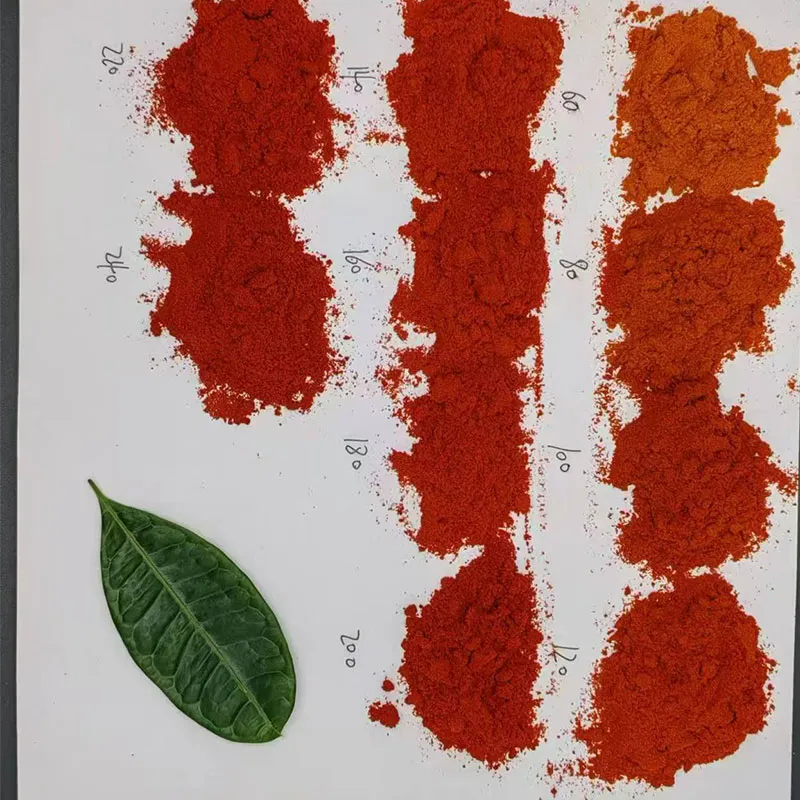- No. 268 Xianghe Street, Economic Development Zone of Xingtai city, Hebei 054001 China
- Byron@hbhongri.cn
Spicy Crushed Red Pepper for Bold Flavor Enhancements in Your Dishes
The Versatility of Crushed Hot Red Pepper
Crushed hot red pepper, a staple in many kitchens around the world, is more than just a spice; it’s a vibrant symbol of culinary diversity and flavor enhancement. Derived from dried and crushed red chili peppers, this fiery condiment has transcended its humble origins to become an essential ingredient in various cuisines, recipes, and dining experiences.
A Brief History
The journey of hot red peppers began in Central and South America, where they were first cultivated by indigenous peoples thousands of years ago. From there, they embarked on a global voyage, reaching Europe and Asia through trade routes and exploration. The introduction of peppers into European cuisine, particularly after the Columbian Exchange, transformed kitchens, and chefs began experimenting with their flavor profiles. Crushed hot red pepper, with its bold and intense flavor, quickly became popular and found its way into spice blends, sauces, and dishes worldwide.
Culinary Applications
The allure of crushed hot red pepper lies in its versatility. It can be used in a variety of dishes, from Italian to Indian, Mexican to Thai. In Italian cuisine, it frequently enhances pasta sauces, pizzas, and even olive oil, providing a spicy kick that complements the richness of tomatoes and cheeses. Its bright red color adds visual appeal, making the dish more appetizing.
In Indian cooking, crushed red pepper is often a key ingredient in masalas, spicing up curries and lentil dishes. When tempered in oil with garlic, ginger, or onion, it releases its essential oils, infusing the dish with a depth of flavor. In Thai cuisine, it is synonymous with heat, featured in stir-fries, soups, and dipping sauces, balancing sweetness and acidity.
Mexican cuisine embraces crushed hot red pepper in salsas and as a seasoning for tacos and enchiladas, where it meshed perfectly with fresh herbs, lime, and avocado
. The spice not only enhances flavor but also brings out the natural sweetness of ingredients.crushed hot red pepper

Health Benefits
Beyond its culinary hold, crushed hot red pepper boasts a plethora of health benefits. Rich in capsaicin, the compound responsible for the heat, it has been linked to a range of health advantages. Research suggests that capsaicin can boost metabolism, promote weight loss, and potentially reduce the risk of chronic diseases such as heart disease and diabetes. It also exhibits anti-inflammatory properties, which can be helpful in alleviating pain and improving circulation.
Moreover, consuming spicy foods has been associated with longevity. Studies have shown that individuals who regularly include hot peppers in their diets may experience lower mortality rates, suggesting a protective effect against various health conditions.
Cooking Tips
When using crushed hot red pepper, moderation is key. A little goes a long way, and the spice can easily overpower a dish if used excessively. Start with a pinch and adjust according to taste. It’s also important to consider the context in which it is used; the spice level will vary based on the specific type of chili pepper used for crushing.
For those looking to create a homemade spice blend, crushed hot red pepper can be combined with garlic powder, onion powder, cumin, and other spices to tailor it to specific dishes. It also pairs wonderfully with the natural sweetness of cinnamon, making it an excellent addition to marinades and rubs for meats.
Conclusion
Crushed hot red pepper is more than just a fiery additive; it’s an ingredient that brings flavor, color, and potential health benefits to the table. Its rich history and adaptability ensure it will remain a beloved staple in kitchens around the globe. Whether you’re sprinkling it over a fresh salad or incorporating it into a hearty stew, this spice offers a world of possibilities that can enhance any dish. So the next time you reach for that jar of crushed hot red pepper, remember that you’re not just adding spice; you’re embracing a tradition that has captivated taste buds for centuries.
-
Turmeric Rhizome Powder: A Golden Treasure from Roots to TableNewsJul.28,2025
-
The Versatile Application Of Crushed Red Hot Peppers: Lighting Up The Red Flames On The Dining TableNewsJul.28,2025
-
The Paprika: A Touch Of Vibrant Red In Color, Flavor, And CultureNewsJul.28,2025
-
Ground Turmeric: A Modern Examination of an Ancient SpiceNewsJul.28,2025
-
Capsicum Liquid Extract: Features, Applications, and ChallengesNewsJul.28,2025
-
Application of Capsicum Liquid Extract in FoodNewsJul.28,2025







